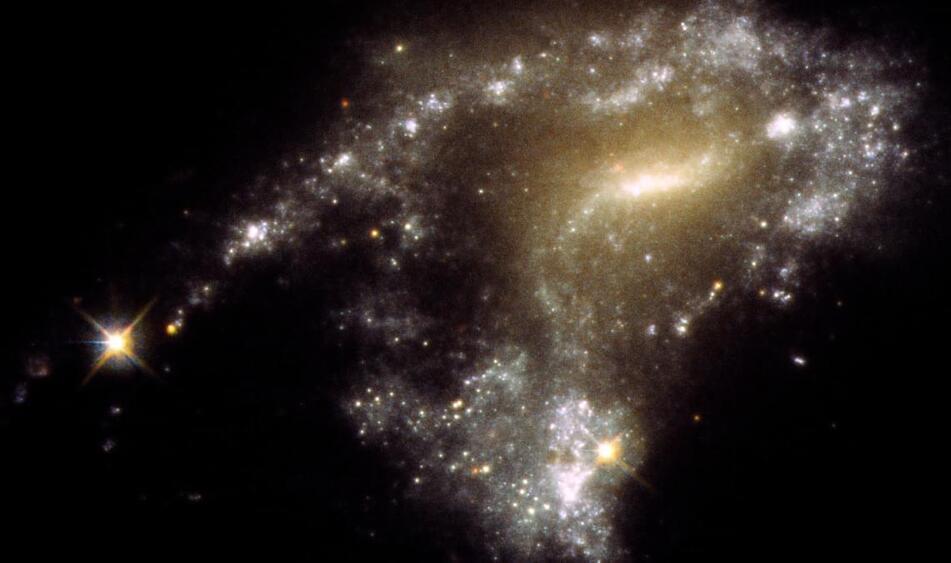When spectacular cosmic events such as galaxy collisions occur, it sets off a reaction to form new stars, and possibly new planets that otherwise would not have formed. The gravitational pull that forces the collisions between these galaxies creates tidal tails—the long thin region of stars and interstellar gas.
The Hubble Space Telescope’s vision is so sharp that it can see clusters of newborn stars strung along these tidal tails. They form when knots of gas gravitationally collapse to create about 1 million newborn stars per cluster.
Specifically, NASA’s Hubble Space Telescope has homed in on 12 interacting galaxies that have long, tadpole-like tidal tails of gas, dust and a plethora of stars. Hubble’s exquisite sharpness and sensitivity to ultraviolet light have uncovered 425 clusters of newborn stars along these tails, looking like strings of holiday lights.
